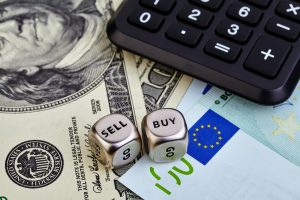 Have you ever wondered which factors affect trading euro-dollar pairs? These two currencies are closely intertwined in many ways. To understand this better, it is useful to take a closer look at the background.
Have you ever wondered which factors affect trading euro-dollar pairs? These two currencies are closely intertwined in many ways. To understand this better, it is useful to take a closer look at the background.
EUR/USD are also affectionately referred to as the euro and fiber. While referring to this pair as euro may be self-explanatory enough, the name “fiber” is thought to have stuck because the GBP/USD pair is called cable, and many traders see this new EUR/USD compatibility as a trading upgrade, in much the same way that cable to fiber is seen as a telecommunications upgrade. Other sources suggest that fiber was the name assigned when it emerged that the fastest optical fiber network in the world was from the Eurozone.
Fiber is one of six currencies that belong to an elite group of pairs called the majors. These pairs are GBP/USD, USD/JPY, AUD/USD, USD/CHF, NZD/USD and USD/CAD. Incidentally, these currency pairs are great for the Power Ranger and Fifth Element forex trading strategies.
Fiber’s power is stellar. As the most traded, desired and widely-held currency, the US dollar is the only currency to supersede the euro, the second most wanted and traded currency across the globe. The EUR/USD covers two main economies: the Eurozone and America. It consequently has more than half of the total trading volume in the world on the forex trading market.
Now let’s zone in on the key trading factors. They are similar to the trading factors affecting other currencies but are unique in the sense that they serve to strengthen the pair and make it so mutually synergistic trading-wise.
Central institutions and figureheads at play
The central banks of Europe and the US Federal Reserve Bank are critical and have the greatest influence of all the institutions. They are currently headed by Mario Draghi and Jerome Powell respectively. They help set and control monetary policy, money supply and interest rates, impacting the relative strength or weakness of the currencies.
The market reacts to every institutional meeting, along with any press briefings and speeches given by their respective heads. Recently, for example, it has been hinted that US rates will continue to rise. It is not US President Trump’s displeasure with these rate hikes that the market reacts to as much as it is what the Fed says about the currency outlook.
Trading sessions
As a trader, primary forex advice recommends knowing which trading sessions come with the most volatility. Fiber is usually slightly traded during an Asian session because this is not when the most important data for the currency is released – that happens during European or US sessions. The activity slows down at noon for lunch, then picks up as the US session starts. At 17:00 GMT, traders in Europe close out their positions and liquidity leaves.
Geopolitical climate
Typical political crises affecting the currencies are elections, pronouncements by major politicians on what the currency should be, and watershed regional events such as Brexit. At the moment, the US trade war with China is starting to have an effect.
Economic data
There are several key economic indicators that can have an impact. The most important ones are:
Interest rate
Economic theory suggests that the International Fisher effect exists – a fine correlation between interest rates and exchange rates. This usually proves to be true.
When US interest rates are higher than the Eurozone’s, the dollar strengthens against the euro. Conversely, when Eurozone interest rates are hiked, the dollar weakens.
Right now, this is not proving true, which means that interest rates are not a key factor affecting the currency pair at the moment. However, this correlation may yet prove accurate in the future. Regardless, a skill that always comes in handy is learning how to predict interest rate movements. It affects not only pairs but forex strategies themselves.
In order to trade EUR/USD successfully, all of these factors need to be taken into account. At different times, some factors are more critical than others, but all of them play a role. When traded intelligently, this currency power pair has enormous benefits to offer.